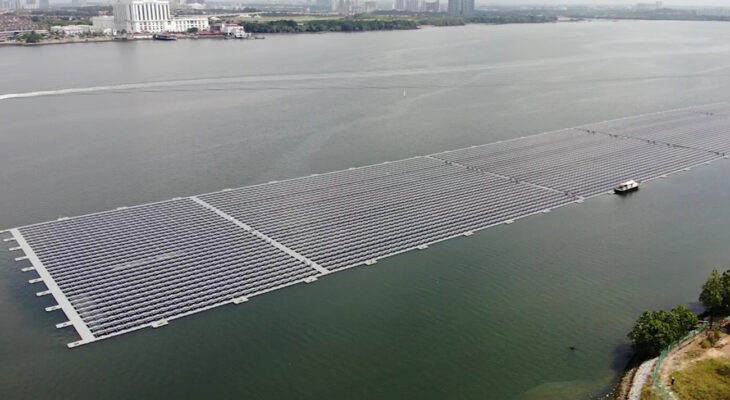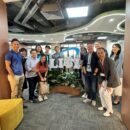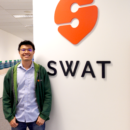
Shining a Light on Renewables
Solar energy solutions provider Sunseap is working to bring affordable clean energy to everyone.
With governments and businesses focused on the transitioning to an energy-efficient, low-carbon world, there has been a rising interest in renewable energy solutions such as solar.
Leading the way in this growing space in Singapore is Sunseap Group, which specialises in solar power purchase agreements, offsite clean energy supply, as well as solar photovoltaic solutions.
BizQ speaks to Rob Khoo, Head of Marketing & Communications, on Singapore’s energy transition and the role that solar power plays in that journey.

What are your thoughts on Singapore Green Plan 2030?
We welcome the introduction of the Singapore Green Plan 2030, which is very much in line with Sunseap’s vision and ideals. Even before the Singapore Green Plan 2030 was announced, our vision was to bring affordable clean energy to everyone. We believe in building sustainable communities, with solar energy being one of the most promising renewable energy sources.
In fact, one of the key targets of the Singapore Green Plan 2030 is to increase solar deployment to 1.5 giga-watt peak by 2025, and 2.0 giga-watt peak by 2030. The challenge is that in land-scarce Singapore, photovoltaic (PV) systems require a substantial amount of space to capture solar energy. Accordingly, such solar deployment targets must factor in Singapore’s physical constraints and rely on innovative solutions. This was a major motivating factor for the recent deployment of our offshore floating PV systems in the Straits of Johor.
Exploring cleaner energy sources is just one aspect of the Singapore Green Plan 2030. The government is also targeting to reduce carbon emissions by greening 80% of buildings by 2030 and developing eight electric vehicle (EV) ready towns by 2025. Sunseap is actively involved in both initiatives through our low carbon solutions such as our energy efficiency technology, green roof solutions, EV charging stations (through our associate Charge+) and smart building technologies equipped with artificial intelligence.
We have also developed new energy storage systems (ESS) which are able to help reduce energy consumption during periods of high usage and lower maintenance costs.
How can solar energy shape a more reliable and sustainable energy future?
Technological advances coupled with an increase in demand for solar panels in China, Europe and the US have historically driven down costs of solar panels. The lower costs, together with increased efficiency of solar panels, mean that project costs have decreased, which would make larger solar PV projects more sustainable going forward.
What role can Singapore play in the path forward for energy transition in Asia?
Singapore is an example of how a country with major land constraints can still implement clean energy infrastructure while maintaining its energy supply.
To overcome such constraints, Sunseap has installed solar panels on the rooftops of many residential and commercial buildings. We have also launched innovative projects, including our offshore floating PV system in the Straits of Johor. Lessons learnt from such projects position us and Singapore well for similar installations elsewhere in the region.
What are some common misconceptions about renewable sources of energy, in terms of both harnessing and using them?
Common misconceptions about solar energy include it being expensive to install or that it may cause property values to decrease, which are not necessarily true. In recent years, the cost and efficiency of solar installation has improved significantly due to technological advancements. There are also several financing options available now for commercial building owners who wish to install solar energy systems.
Another misconception is that installing solar panels will increase the temperature in the building and thus increase air-conditioning costs. In reality, adding solar panels does just the opposite, as the panels form a layer of protection against direct sun rays, which helps lower the temperature in the building.
Why are some companies apprehensive about tapping solar energy and how can this concern be addressed?
Some companies may be apprehensive due to the high initial setup costs of deploying solar energy, which can be addressed through several ways. Sunseap addresses this issue with our onsite solar power purchase agreement model, where we cover the cost of installing the solar energy infrastructure in the building, and customers are only charged for the solar electricity generated from the system that they use. In addition, during the tenure of the agreement, Sunseap will also take care of the maintenance of the solar PV system. This helps companies to adopt solar energy systems with little capital expenditure.
Furthermore, we also offer Sunseap Energy Plans, which allow companies who do not own their buildings and lease office spaces to purchase clean energy generated from our solar PV systems.


















